Use this guide to check out different types of collars when you’re listing on eBay.
What is a collar?
It’s part of an item of clothing – such as the aforementioned shirt, blouse, coat or dress that fastens around the neck – or in design parlance ‘frames’ the neck. It is made from a separate piece of material – it isn’t cut or folded from the existing body of a garment. Usually the collar is permanently attached but in some cases you can remove the collar as with old fashioned dress shirts.
Collars are a nuisance so why do we wear them?
Apparently ‘modern’ collars can be traced back to c. 1300 and are descended from the ruffle. I should imagine that the earlier collars were simply designed to keep your neck warm, because you know what it’s like when you’re sitting in a draught, and let’s face it, there wasn’t much heating in those days. Collars became increasingly decorative from the beginning of the twentieth century, and are sometimes worn as jewellery.
Useful terminology re: types of collars
The Band is a strip of fabric that fastens around the neck, along the line of the top of the body of the garment. The collar is attached to this either permanently or temporarily.
The Points on a collar are the corners of a collar.
The Spread of a collar is the distance between the points of a shirt collar.
The Stand of a collar is the band on a coat or shirt collar that supports the collar itself.
Ascot collar
You have to read this one in a very posh and affected voice. Tally ho chaps! An Ascot collar is a very tall standing collar with the points turned up over the chin. It should be worn with an Ascot tie and a plum in the mouth. You should also be carrying a copy of the Racing Times and a hip flask in your pocket. A large wodge of £50 notes will go down well too. Carry on.
Albany collarAn Albany collar is your bog standard turndown cutaway collar. It was usually worn during the early 20th century.
Band collarA band collar is more commonly known as just a Grandad collar. It’s a small standing band, usually buttoned at the nape of the neck and can be worn with detachable collars. It was popular among women in the late 1980s.
Barrymore collarA Barrymore collar is a turnover shirt collar that has long points. It was worn by the Hollywood actor John Barrymore (February 14 or 15, 1882 – May 29, 1942). Barrymore was proper tabloid fodder. He was a drunk, who married and divorced a number of times. Subsequently the style became fashionable again in the 1970s, although it was then more often referred to as a “tapered collar”. It was worn with fashionably wide ties and was seen on dress shirts.
Bertha collarA Bertha collar was a wide, flat, round collar, often made of lace or some other sheer fabric, that was worn with a low neckline in the Victorian era. It became fashionable again in the 1940s.
Buster Brown collarThe Buster Brown was a wide, flat, round collar that sometimes had a ruffle. It was usually worn with a floppy bow tie, and was commonly found on boys’ shirts from c. 1880-1920 and is seen in many illustrations of the time. This is the first collar that I think we should bring back and require people to wear. What about a kind of ‘off the pitch’ football wear? We’ll tell them it’s fashionable, designed by some top designer, and costs a small fortune, and every footballer worth his salt will wear them.
Butterfly collarSadly it isn’t a collar that has been lovingly spun by colourful butterflies. I really want it to be, but no. Similar to a wing collar, the Butterfly collar has rounded tips. It was popularised by the inimitable and stylish fictional detective Monsieur Hercule Poirot. Very dapper!
Button-down collarNot complex this one. You’ll never guess what form this takes. A button down collar is a collar that has buttonholes on the points and can be fastened to the body of the shirt. Just in case of high winds, you know …
Camp collarThe camp collar does not love Donna Summer and early Erasure. It does not favour pastel coloured shirts, and does not have a kitchen cleaner than Singapore. The camp collar, also known as a convertible collar or a notched collar is a one-piece collar that lies flat, with part of the shirt also lying flat to create a notch. I don’t know why it’s camp …
Cape collarA collar made to look like a cape that hangs over the shoulders. Everyone do their superhero impressions now!
Chelsea collarA Chelsea collar is made for women. It’s a collar for a low V-neckline, with a stand and long points. It was popular in the 1960s and 1970s.
Clerical collarAn easy one! The white band and collar that are worn by clerics and are universally recognisable.
Convertible collarI got all excited when I saw the name of this type of collar. A convertible collar sounds like something out of Transformers, but maybe that’s just wishful thinking. Imagine the scenario … you shoot your cuffs and just pinch your cuff links and the collar of your shirt stands up and transforms into …. Ooh I dunno … an open top McLaren 650S Spider? No. That didn’t work. The convertible collar is designed to be worn with the neck button either fastened or unfastened. Phew. That’s a load of old fuss about nothing then. Decisions, decisions!
Cossack collarNow this one is more fun! A Cossack collar is a high standing collar that opens to one side, not the middle. It is frequently trimmed with embroidery and became popular … wait for it … because of the influence of the 1965 film Doctor Zhivago. Omar Sharif! Such a sad film. *wipes tears away*
Detachable collarAlso known as a false-collar, a detachable collar is a collar that has been made as a separate accessory to be worn with a band-collared shirt (for example turndown, tab, and dog collars, Imperial or Gladstone). Detachable collars are useful because they can be cleaned and starched separately to the rest of the shirt. Hence their popularity.
Double Round CollarA turn down collar with rounded tips.
Edwardian CollarAn Edwardian collar is a high stiff collar.
Eton collarYou’ll have seen pictures of the current cabinet sporting their Eton garb. The wide stiff buttoned collar has formed part of the uniform of Eton College since the late 19th century. Stiff and stupid looking? You got it.
Falling bandA falling band is currently out of fashion. It’s a collar with rectangular points that fall over the chest. It was popular during the 17th century and was used as a part of Anglican clerical clothing well into the nineteenth century.
Fichu collarThe Fichu collar is a collar that is styled rather like an 18th-century fichu. Oh that’s helpful, I hear you cry. Well wind your neck in. A fichu is a large neckerchief folded into a triangular shape and worn with the point in the back and the front corners tied over the breast. Now you all want one, don’t you? These have largely fallen out of fashion but occasionally you will hear someone in the changing room asking, “Does it fichu?” and now you know why. Is that my taxi?
Gladstone collarThe Gladstone was a hugely popular Victorian collar and one of those ones that help the upper class to look incredibly haughty. It’s a standing collar with the points pressed to stick out horizontally at the side-fronts, and was then worn with a scarf or ascot. It was popularized by the British Prime Minister William Ewart Gladstone and therefore named after him. I’d be scared to turn my head. And yes … that is Mick Jagger sporting a Gladstone collar in the photo.
High neck collarParticularly popular among women in the Edwardian era. Again, the head has to be held high and so the look is elegant or snotty depending on your place in the pecking order of society. The collar covers all or most of the neck and so the neck became fetishized at this time, having at other times in history been open to the elements and for all to see. Things that are permanently on show tend to lose their appeal.
HRH collarA ‘stand-up turned-down’ collar. Hilarious. This shirt collar was created by Charvet for Edward VII and it became extremely popular at the end of the nineteenth century – presumably before Edward was Edward VII because Victoria saw out the nineteenth century and died in 1901 so Edward must have been a prince. Charvet (also known as Charvet Place Vendôme) was founded in 1838 and is a French high-end shirt maker and tailor in Paris. They design, produce and sell bespoke and ready-to-wear shirts, neckties, blouses, pyjamas and suits to kings, princes and heads of state.
Imperial or Poke collarAn imperial collar – also known as a poke collar – for obvious reasons I guess, was a stiff standing collar that was worn by men formally. It is differentiated from other tall collars mainly because it has a lack of tabs at the front. It is now popular with steampunk aficionados.
Jabot collarA standing collar with a pleated, ruffled, or lace-trimmed frill down the front.
Johnny collarA style with an open, short V-neck and a flat, often knit collar. Named after Johnny. I’m just not sure which one.
Lacoste collarRene Lacoste invented this un-starched and flat, protruding collar on a tennis shirt.
Mandarin Cadet collarAlso known as a Chinese collar, the Mandarin collar is a tidy small standing collar, open at the front, that has been drawn from traditional Manchu or Mongol-influenced Asian garments.
Man-tailored collarHaha! You thought you could fool us! Wholesale Clearance UK will not be fooled. A man-tailored collar – not for men. Oh no. It’s actually a woman’s shirt collar that has been made to look like a man’s shirt collar. It is standing and stiffened (ahem) and has buttoned-down points.
Mao collarNamed for Mao Zedong, the Mao collar is a short, almost straight standing collar that has been folded over. The points of the collar extend only to the base of the band. This is a major characteristic of the Mao suit.
Masonic collarThe Masonic collar (dodgy handshakes abound) is a detachable collar made of fabric or chains (presumably not really heavy winch chains). These collars are worn by Freemasons of high rank or office to signify the office they hold. They tend to have a jewel attached to the bottom of the collar which helps to define the ‘Brothers’ rank and office. Not really a fashion item. I can’t see us having many for sale on the Wholesale Clearance UK website. But you never know …. *scoots out in search of a job lot of Masonic goodies*
Medici collarThis Medici collar can only really be worn by people who are truly evil and drink the blood of virgins, and bathe in the milk of a million magic goats. Or something like that. I can’t quite remember. A Medici collar is actually a flared, fan-shaped collar with a V-opening at the front. It became popular in the 1540s and 1550s, and similar styles can be seen in portraits of Catherine de’ Medici. Who was evil. Allegedly.
Middy collarAlso known as a sailor collar, this type of collar was popular in the early part of the twentieth century (the last Tsar of Russia’s children were often seen in clothes with this sort of collar) and then again in the mod to late eighties.
MockAlso known as a mock neck, the mock collar is a knitted collar that is similar in style to a turtleneck but it comes without a turnover. That’s not very helpful is it? Well you’ll just have to look up turtleneck.
Napoleonic collarPretty obviously, the Napoleonic collar was so called because of its association with Emperor Napoleon I Bonaparte (August 1769 – 5 May 1821) and his beautifully pressed military uniforms. The Napoleonic collar is actually a turnover collar, which is fairly rigid in construction (as you would expect – he walked around with a broom up his backside) and open at the front. It has been described as similar to a Nehru collar but seeing as Nehru wasn’t born for another 70 years or so, this seems like a daft comparison. The Napoleonic collar is actually much higher and generally shaped to frame the wearer’s neck and lower head. You can also see this design feature in Elvis Presley’s “stage uniforms” in his later years, as designed by William Belew.
Nehru collarThe Nehru collar – mentioned directly above was named after Jawaharlal Nehru (14 November 1889 – 27 May 1964) who was the first Prime Minister of India and a central figure in Indian politics for the first half of the twentieth century. The collar that takes his name is a small standing collar, which meets at the front and is based on traditional Indian garments. It was popularised in the 1960s when it was seen on the Nehru jacket.
Notched collarSee also camp collar above. The notched collar is a wing-shaped collar with a triangular notch in it. It is often seen on blazers and blouses with business suits. You can also find rounded, notched collars appearing on many forms of pyjamas. That’s if you wear pyjamas. Does anyone still wear traditional pyjamas? Don’t you get tangled up in them?
Peter Pan collarI know someone who failed their needlework exam aged 13, because they didn’t know what a Peter Pan collar was and drew a picture of Kermit the Frog’s collar instead. A Peter Pan collar is a flat, round-cornered collar, named after the collar of the costume worn in 1905 by actress Maude Adams in her role as Peter Pan. Since then it has proved to be a popular collar for inclusion on little girls’ dresses.
Piccadilly collarCheap and cheerful, and in some ways very eco-friendly. The Piccadilly collar is a wing collar made of plastic or celloid.
Pierrot collarArrr Pierrot. Pierrot is a Commedia dell’Arte character. Conventional plot lines for Commedia dell’Arte productions involved plenty of sex, jealousy, love and old age. A bit like Holby City then. Pierrot was a character portrayed as a sad clown, pining for the love of Columbine, who usually breaks his heart and leaves him for Harlequin. *sigh* He wore a round, flat, limp collar – which let’s face it probably didn’t win him many admirers, and so the Pierrot collar is based on his costume.
Poet collarA Poet collar is so perfectly named. It was a soft shirt collar, often with long points, and was worn by Romantic poets such as Lord Byron. In the 1970s, post hippie era, many shirts had a collar in a style reminiscent of this.
Popped collarThe popped collar is one that you may be familiar with even if you don’t know its name. It is a style of wearing a collar – the collar is unfolded and worn high against the neck. It was firstly made popular in the early 1980s with Polo shirts. More recently the 2000s witnessed a resurgence thanks to ‘bro culture’. What is ‘bro culture’ I hear you ask. Apparently it can be defined as “male youth subculture of “conventional guys’ guys” who spend time partying in ways similar to each other. Although the popular image of bro lifestyle is associated with sports apparel and fraternities, it lacks a consistent definition. Some aspects vary regionally such as in California where it overlaps with surf culture.” Nothing we really need to care about then!
Pussy bowUgh. Completely hideous. The thing that nightmares are made of. So reminiscent of the 1980s, it can easily cause flashbacks and nightmares. The pussy bow collar was tied in a large bow under the wearer’s chin. It is particularly associated with Margaret Thatcher and Princess Diana and should be avoided at all costs.
Revere collarA flat V-shaped collar often found on blouses. Much ‘revered’ in certain fashion circles …
Rolled collarAny collar that is softly rolled where it folds down from the stand (as opposed to a collar with a pressed crease at the fold).
Round collarAny collar with rounded points.
Ruff collarI cannot think of any reason why the ruff collar shouldn’t make a comeback. Really, we all ought to be wearing them. I think they should be incorporated onto overalls and business suits immediately. Anyone who has watched Blackadder will know that a ruff collar is a high standing pleated collar that was popular in the renaissance period. It was made of starched linen or lace. It was popular throughout the late seventeenth century and again in the early nineteenth century. Amusingly, because of their shape they were also known as “millstone collars”. Can you imagine what a pig they were to keep clean? That’s probably why only the rich wore them. Think of Baldrick. We never saw him in a ruff, did we?
Sailor collarSee middy collar above. A sailor collar has a deep V-neck in front, it doesn’t stand up, it simply flops over. It has a square back, and is based on a traditional sailor uniforms. A midshipman’s uniform, I am reliably informed.
A round collar for a V-neckline that is extended to form lapels. You’ll often find these on cardigan sweaters, dinner jackets and women’s blouses.
Spread collar
Also known as a cut away collar, the spread collar is a shirt collar with a wide spread between the points. This wide space allows the accommodation of a bulky necktie knot.
Tab collarA tab collar is a shirt collar with a small tab that fastens the points together underneath the knot of the necktie.
Tunic collarVery similar to the Grandad collar (see above), the tunic collar is a shirt collar with only a short (1 cm) standing band around the neck. There are holes in the band that allow you to fasten a detachable collar using shirt studs. If you really want to.
Turned-down CollarThe opposite to a wing collar, a turned-down collar is one that is folded down and pointing down.
Upturned collarThis one seems quite similar to the popped collar above, although I’m sure that in fashion circles you may well find that this is not the case, dahling. An upturned collar is one that is otherwise flat. It has a protruding collar either on a shirt (especially a tennis shirt), jacket, or coat and has been turned upward, either for sport use, or for warmth, or as either a “fashion signal” or a perceived status symbol. Dear me.
Elvis Presley apparently favoured this collar style, in the earliest years of his career, because he believed his neck looked too long. So that’s an upturned collar in his early years and a popped collar in his later years. Are the two the same? Don’t ask me.
Van DykeA Van Dyke collar is one that was named after Sir Anthony Van Dyck (1600-49). It was a large collar with deep points standing high on the neck and falling onto the shoulders. It was prettily trimmed with lace or reticella, and was worn in the second quarter of the 17th century by the likes of King Charles. The Van Dyke is named after the portraitist Anthony van Dyck, who depicted many men wearing the collar (and other clothes) in his paintings.
Windsor collarA Windsor collar is a cutaway collar, usually on a dress-shirt. It is slightly stiff, with a wide spread (space between the points) to accommodate a Windsor knot tie. It was most fashionable during the 1930s.
Wing collarThe wing collar or wingtip collar is a small budgerigar that sits on the top of your shirt. Either that or it’s a small standing collar with the points ironed in such a way that they stick out horizontally, resembling “wings”. The wing collar is one of those types of collar that are worn with men’s evening dress (white tie or black tie) and is a descendant of the Gladstone collar (see above). Who knew that collars had offspring? It is still used today by barristers in the UK, Canada and India.
Wing whiskA stiffened half-circle collar that stands tall. It was worn in the early seventeenth century.
Y-collarSimilar to a Johnny collar (see above), only with one or two buttons at the bottom of the V-neck line, creating a “Y” shape.
Over to you
Phew. That was a mammoth post. Can you think of any types of collars we’ve left off this list? Let us know below or join the conversation on Facebook.
 Wholesale
Wholesale 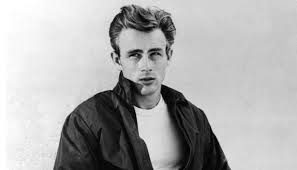
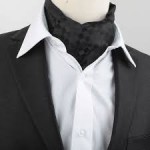
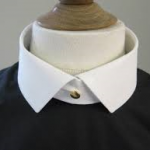
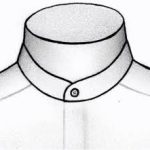
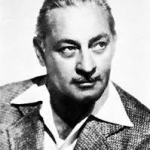
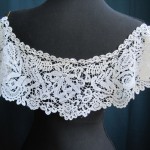
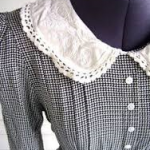
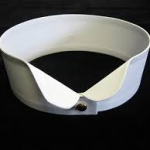
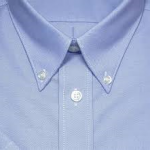
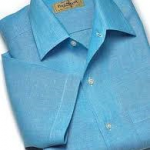
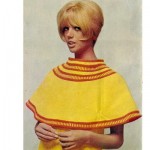
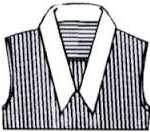
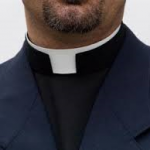
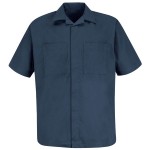
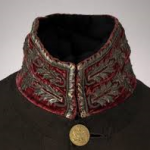
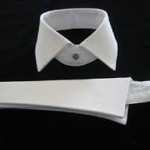
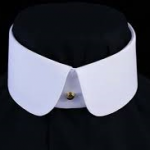

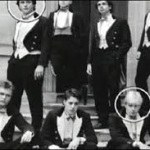
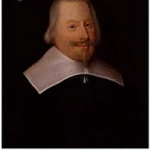
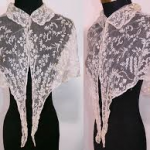
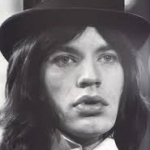
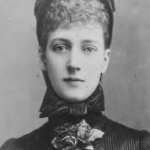
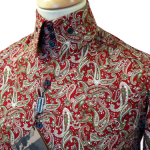
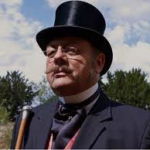
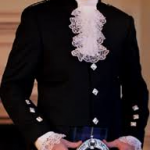
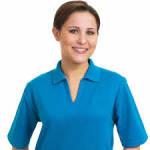
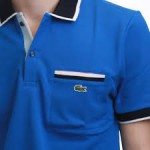
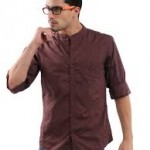
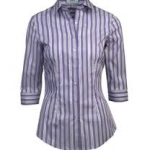
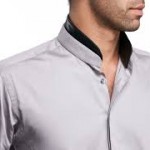
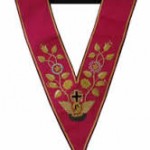
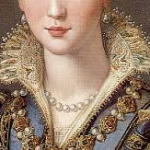
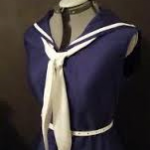
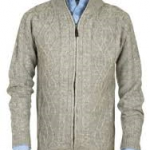
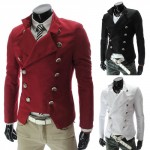
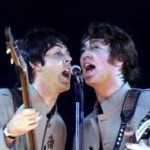
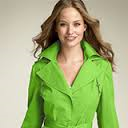
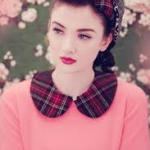
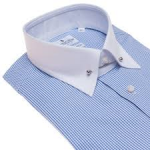
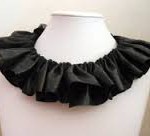
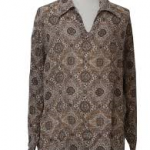
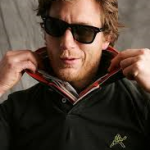
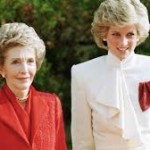
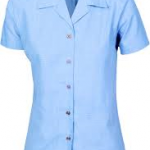
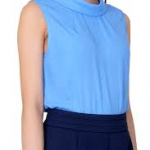
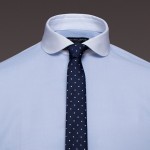
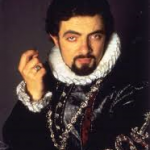
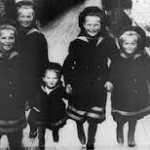
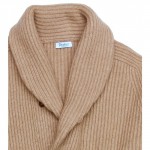
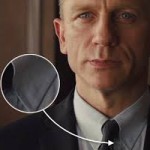
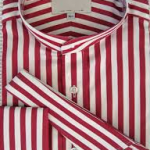
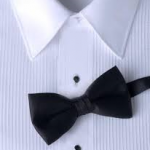
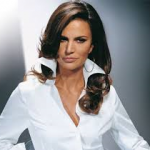
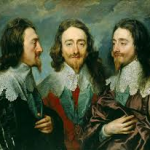
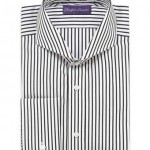
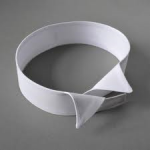
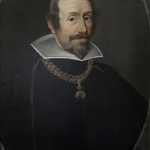
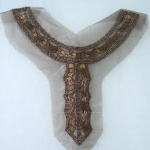
3 Responses to “Hot under the collar? A handy reference guide to types of collars”
educational and amusing and much needed after fruitless attempts to find where to buy detachable collars
Hello. I hope you read this. I had to explain something. You are probably too young to have learned this from a great grandmother. A piccadill collar is the kind of collar you see in portraits of Elizabethans, like Shakespeare, and the Queen herself. White collar of ruffles, with three to four to five rows of ruffles. Piccadilly Street was so named because there was a piccadill factory near the end of it–it’s where the name of the collar comes from. Thought you’d like to know. Cheers A
Mens 40s fashion - The collared shirt, a timeless staple - Vintage Blog • November 30th, 2019 at 10:35 am
[…] [iii] https://www.wholesaleclearance.co.uk/blog/reference-guide-to-types-of-collars/ […]